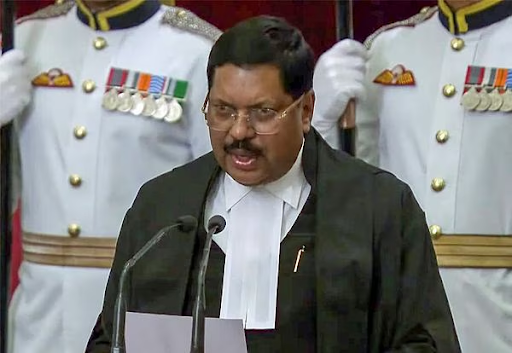Description

Copyright infringement not intended
About
- The Union Ministry of Home Affairs (MHA) has completed the Mother Tongue Survey of India (MTSI).
- The objective of the survey is to preserve and analyse the original flavour of each indigenous Mother Tongue, it has been plan to set up a web archive at the National Informatics Centre (NIC).
- The survey also documents the linguistic features of the selected languages.
- The National Informatics Centre (NIC) and the National Film Development Corporation (NFDC) will document and preserve the linguistic data of the surveyed mother tongues in audio-video files.
Mother tongues in India
- As per 2011 linguistic census data, more than 19,500 languages grouped into 121 mother tongues are spoken in India.
- 6% of the population declared the Hindi language as their mother tongue.
- Bengali is the 2nd most popular mother tongue accounting for 8% of the population.
- The new National Curriculum Framework (NCF) for the foundational stages of education has recommended that the mother tongue should be the primary medium of instruction in schools for children up to 8 years of age.
- Evidence from research confirms the importance of teaching children in their mother tongue during the foundational years and beyond
- Children learn concepts most rapidly and deeply in their home language, the primary medium of instruction would optimally be the child’s home language/ mother tongue/ familiar language in the Foundational Stage,” it states.
- According to the Census of 2011, in India, there are 121 mother tongues, of which 22 languages are included in the eighth schedule of our Constitution, and account for the mother tongue of 96.72% of Indians.
- The National Education Policy (NEP) 2020 recommended the use of the mother tongue as a medium of instruction in schools whenever possible.

Highlights of New Education Policy 2020
- The National Education Policy (NEP) 2020 was released in July 2020.
- NEP 2020 will replace the National Policy on Education, 1986.
- It aims at ensuring Universal Access at All Levels of schooling from pre-primary school to Grade 12.
- It Ensures quality early childhood care and education for all children between 3-6 years.
- It introduced a New Curricular and Pedagogical Structure (5+3+3+4).
- 5 years of foundational stage (for ages 3 to 8).
- 3 years of preparatory stage (for ages 8 to 11 or classes 3 to 5).
- 3 years of middle stage (for ages 11 to 14 or classes 6 to 8).
- 4 years of secondary stage (for ages 14 to 18 or classes 9 to 12).
- No strict separations between arts and sciences, between curricular and extracurricular activities, and between vocational and academic streams.
- To establish a National Mission on Foundational Literacy and Numeracy.
- Promoting multilingualism and Indian languages.
- Reform in Assessment of Board Exams. Setting up a new National Assessment Centre, PARAKH (Performance Assessment, Review, and Analysis of Knowledge for Holistic Development).
- Special priority is given to socially and Economically Disadvantaged Groups.
- A separate Gender Inclusion fund and Special Education Zones for disadvantaged regions and groups;
- A transparent process for recruitment of teachers and merit-based performance assessment.
- Ensuring availability of all resources through school complexes and clusters.
- Setting up of the State School Standards Authority.
- Promoting Vocational education in school and higher education systems.
- Increasing Gross Enrolment Ratio (GER) in higher education to 50%.
- Multidisciplinary Education with multiple entry/exit options.
- Establishment of Academic Bank of Credit
- Setting up of Multidisciplinary Education and Research Universities.
- Setting up of the National Research Foundation.
- Expansion of open and distance learning to increase GER.
- Teacher Education - 4-year integrated stage-specific, subject-specific Bachelor of Education
- All higher education institutions (HEIs) will be restructured into 3 categories:
- Research universities focus equally on research and teaching.
- Teaching universities focus primarily on teaching.
- Degree-granting colleges primarily focused on undergraduate teaching.
- Multiple mechanisms with checks and balances will combat and stop the commercialization of higher education.
- All education institutions will be held to similar standards of audit and disclosure as not-for-profit entities.
- The Centre and the States will work together to increase public investment in the Education sector to reach 6% of GDP at the earliest.
- Strengthening of the Central Advisory Board of Education to ensure coordination to bring overall focus on quality education.
Objectives of NEP 2020
- Reforms in curriculum content.
- The medium of instruction should be in the local language/mother tongue of the child. The current three-language formula will continue to be implemented.
- Reform in the overall assessment process
- Teacher training and management.
- Ensure effective governance of schools.
- Increasing Gross Enrolment Ratio to 50% by 2035 (It was 26.3% in 2018).
- Restructuring of institutions.
- Multidisciplinary education.
- Improving research.
- Promoting Digital education.
https://indianexpress.com/article/explained/mother-tongue-survey-of-india-involving-576-languages-is-ready-8256733/
https://t.me/+hJqMV1O0se03Njk9














